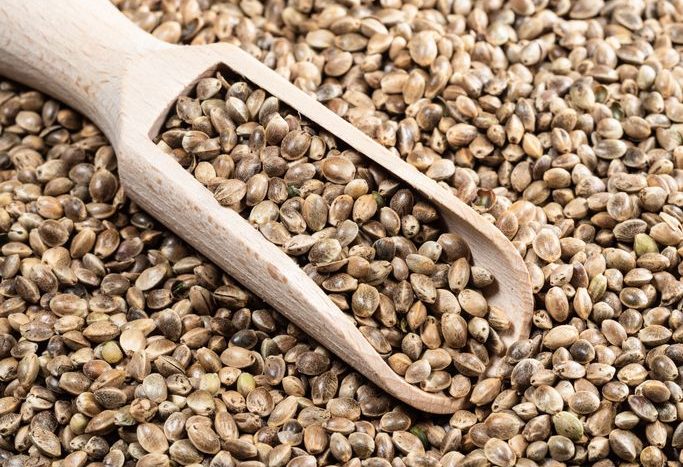Disclosure: AFN’s parent company, AgFunder, is an investor in Brightseed.
Brightseed, a US startup exploring novel health and nutrition uses for plants, has discovered phytochemicals in waste hemp seed shells which could be used to treat metabolic health problems.
Brightseed’s AI-driven discovery platform, Forager, found two bioactive compounds — N-trans-caffeoyltyramine (NCT) and N-trans-feruloyltyramine (NFT) — in hemp hulls, the outer shells of Cannabis sativa seeds. These discoveries follow Forager’s earlier detection of the compounds in black pepper.
What’s more is that, according to the findings of two studies published in Nature‘s “Cell Death & Disease” journal, NCT and NFT have demonstrated potential to clear fat from the livers of mice, as well as from human cells.
“This is new insight. Forager identified a novel benefit previously unknown to science,” says Brightseed co-founder and chief operating officer Sofia Elizondo.
“In preclinicals, NCT and NFT triggered a new action on HNF4a central metabolic regulator to clear fat from the liver of mice and in human cells, opening up a new insight into the potential potency of these compounds,” she tells AFN.
The studies found that certain doses of NCT and NFT “triggered a total body reset in mice fed a high-fat diet,” while also leading to reduced liver fat, regulated lipid levels, restored healthy organ function, reduced body weight gain, and reduced liver inflammation in the animals. It also showed increased insulin levels in human cells, “signaling a resetting and restoring of metabolism from poor to healthy.”
Given this, the Brightseed team believes that NCT and NFT could be used in the not-too-distant future to treat non-alcoholic fatty liver disease (NAFLD) – and potentially other metabolic conditions, too.
NAFLD is characterized by an excessive build-up of fat in the liver. It can cause digestive and other problems and, in its later stages, liver dysfunction and even failure.
There are no approved treatments for the disease, which is thought to effect as much a quarter of the global population. It’s estimated that 80% of people who are obese have NAFLD.
Human clinical trials are now in progress to determine the two compounds’ potential impact on NAFLD and obesity, Elizondo says.
The other advantage of sourcing these phytochemicals from hemp hulls is circularity.
Hemp hulls are typically treated as a waste byproduct from the extraction of hemp hearts: the inner part of the Cannabis sativa seed which is valued for its nutritional profile.
If hemp hulls are shown to have utility in treating NAFLD, then they no longer need to be discarded; instead, they can become an additional value stream for the hemp and marijuana industries. It would also underline the health and nutrition potential of the cannabis plant beyond cannabinoids.
“Hemp seeds are abundant and hemp is [already] a highly sustainable crop for us to source these plant bioactives from. As we move to commercialization of NCT and NFT, we are exploring all avenues [for] potential partnerships,” Elizondo says.
Earlier this year, Brightseed partnered with Olam Food Ingredients, a division of Singapore-based agribusiness and commodities giant Olam, to explore potential new health applications of produce including black pepper and garlic. The San Francisco-based startup also has a longstanding collaboration with Danone; together, the pair have discovered 10 times as many compounds with potential health applications in the soybean plant than were previously known. Brightseed has also partnered with farmer cooperative and juice brand Ocean Spray to analyze the phytonutrient composition of cranberries.
According to Elizondo, Forager has “mapped 1.5 million compounds to human biological benefits” to date.




